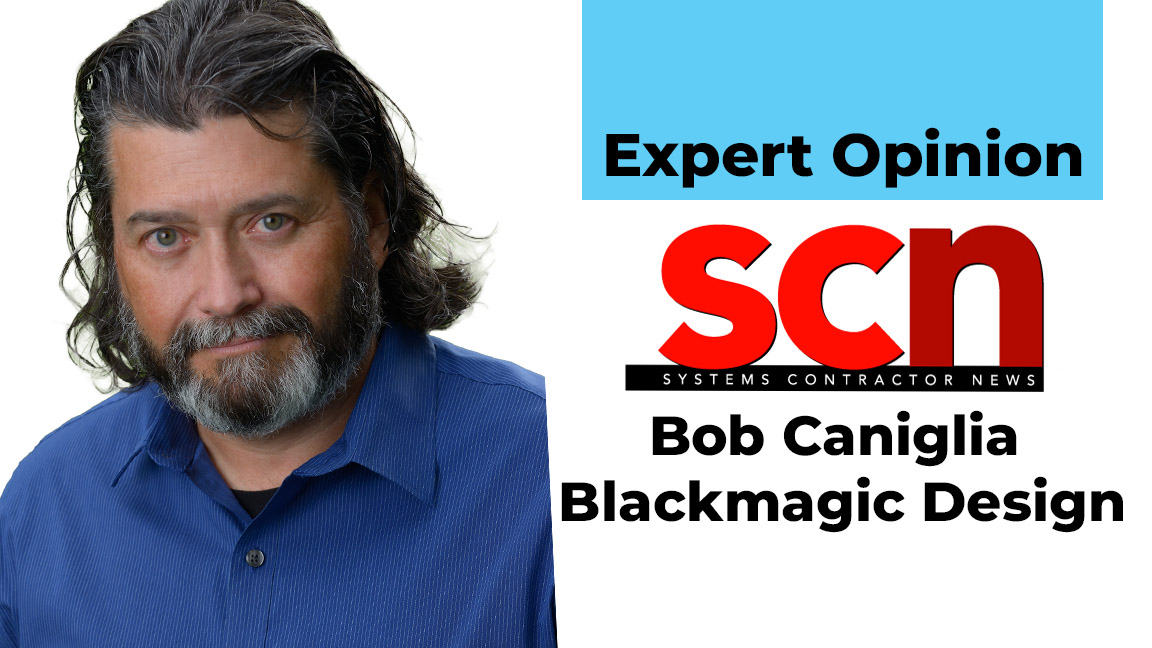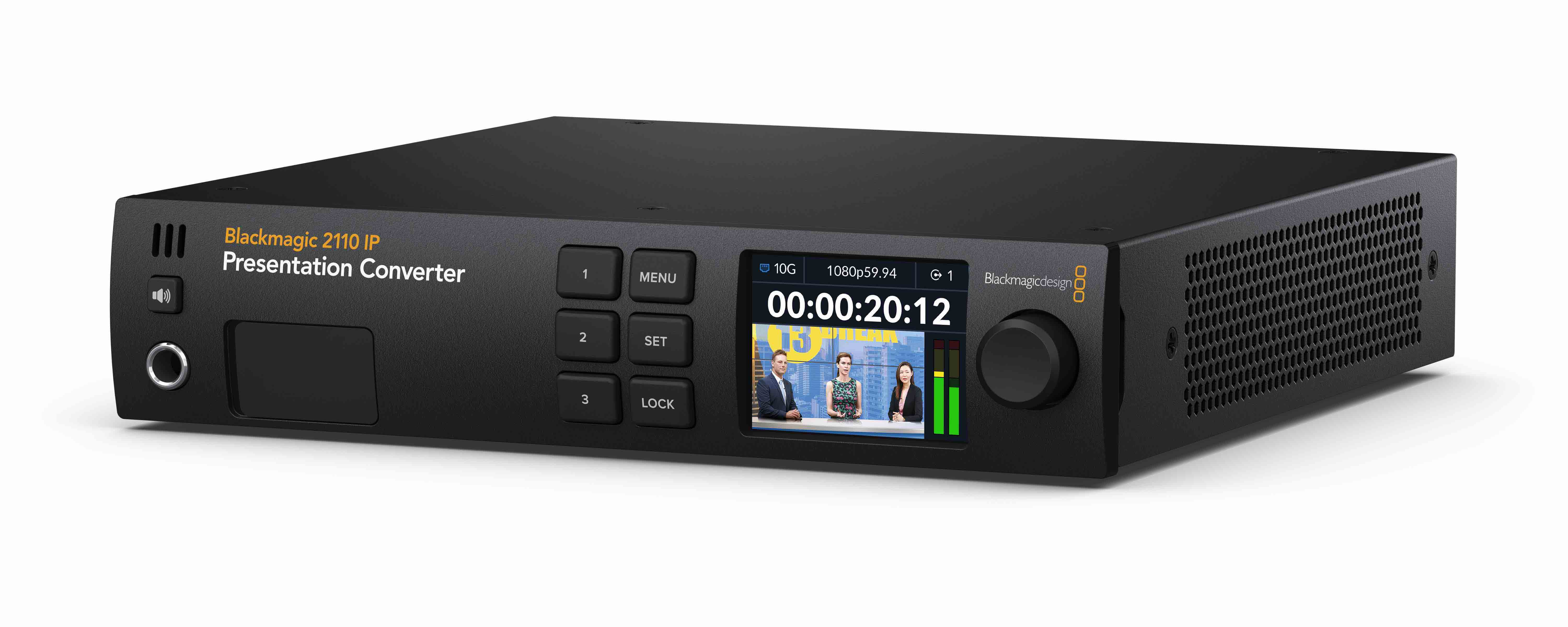
While not a brand-new concept, video-over-IP has been steadily evolving over the years, and its growth as a technology is revolutionizing workflows as it becomes more prevalent in products coming to the market. IP video offers an opportunity for users to consolidate equipment, as it allows the use of equipment that manages both network and video functions. It also offers less cabling with bidirectional support and low latency.
[The Integration Guide to AVoIP 2024]
Where IP comes into play is for those who want to move video signals over long distances to other locations in a facility, venue, or campus. For example, someone producing a program on a college campus who needs to send it to the school's TV studio across campus could use IP video over their network to accomplish that. The technology could also be used within a single facility if signals need to be shared within different production studios.
In particular, the SMPTE ST 2110 suite of standards is gaining traction as an option for Pro AV users who want more flexibility with connections, resolutions, and frame rates, as it gives users a path to migrate into low-cost, broadcast-quality IP systems.
Setting the Standard
Released by SMPTE in 2017, ST 2110 specifies the transport, synchronization, and description of 10-bit video, audio, and ancillary data over managed IP networks for broadcast. It can also re-sync SDI inputs to a common PTP clock, or external gear can lock to the reference output that’s also generated from the PTP clock.
ST 2110 typically uses fiber with bandwidths of 10, 25, 40, or 100 Gbps—and its standards are vendor and video format agnostic, so they support 4K, HDR, and other emerging formats. Versus other IP video transport protocols, ST 2110 is more flexible and adaptable, as the standards are open and accessible.

Designed as a new set of applications based on IT protocols and infrastructure, ST 2110 offers IP video as a flexible alternative to SDI, similar in value to when the industry moved from physical tapes to virtual files for content storage. While ST 2110 is still evolving, it has excellent future-proofing potential, great routing capabilities, and separate audio, video and metadata signals. Plus, it doesn’t need to be licensed, and the quality is very high because it’s uncompressed.
Building an ST 2110 system is relatively easy and reliable—and it doesn’t need to be all IP or nothing. There are products on the market today that help users pump in almost any video signal and convert it to ST 2110. For example, take a house of worship with multiple buildings around its campus. It wants to leverage an IP-based workflow, but it wants to retain some of its existing infrastructure instead of tearing everything out and replacing it all, which would be a greater expense.
In this case, when using IP video to send sources to several buildings, each location would need an ST 2110-based converter, but the sources wouldn’t have to return to a central point. Instead, each location could send a source to another location housing a converter, and there would be no need for a dedicated cable for every source and destination. This provides the ability to send signals via IP and bring them in and out of the SDI world, for example, to be able to interact with other products and workflows.
Another consideration is that ST 2110 is extremely flexible and does not lock users into routing from a specific location. Systems can be spread across departments, campuses, venues, or other various locations, and users still have access to signals as long as they are all on the same network.
Get the Point
ST 2110 products aren’t built solely for the IT world, but because of the network and bandwidth aspects, historically there has been an IT component to developing the workflow and keeping it running. Traditionally, IP video solutions have required IT support, but with advances in today’s technology, almost anyone can make IP workflows a reality.
For example, the easiest way to use ST 2110 is point-to-point, and for many users that will suffice. All they need is an Ethernet cable between a rack and a monitor converter or camera, which also supplies remote power and bidirectional video. Point-to-point connection can also auto configure, so users don't need to enter any settings. Point-to-point connections offer a great solution in settings like live events, as the Ethernet cable can make connecting to cameras extremely simple with all control, power, and video down a single cable.
If an Ethernet switch is preferred, perhaps for larger implementations, users still have a clear path. As with anything, the larger the system, the more there is to consider, but this shouldn’t be a deterrent. When working in larger ST 2110 systems, such as broadcast, users can connect their video gear to an Ethernet switch and then make the connections between devices by configuring the switch. Products with NMOS are particularly useful in this scenario, as it describes how ST 2110 devices are discovered and controlled on IP networks.

When using an Ethernet switch, instead of point-to-point, it’s a point-to-multipoint situation, and a controller would be needed for the switch to manage all the handshakes. Some companies offer free software controllers if they run on a computer that is on the same network. Other switches can be as big as 100, 200, or 400 ports for large campuses/networks. Don’t be intimidated by a larger setup—while it may be more complex to configure, a ST 2110 setup is still very flexible and achievable for larger systems.
On the bandwidth side, one of the advantages with ST 2110 is that users can split the video and the audio stream, so if there is a poor connection, users can pick just the audio stream. Not having both tied together saves bandwidth, if needed.
Real World Expectations
The latest IP products offer users a lower cost, simplified way to achieve IP video and ST 2110 standards. A wide array of users can benefit from implementing ST 2110 into their systems, including college campuses, television stations, production studios, live events, sets, corporate setups, houses of worship with multiple campuses, and more.
Just like an SD workflow, users can achieve the advantage of ST 2110 IP video with simple Ethernet cables, remote power, and bidirectional video. Plug cameras into rack converters and get all the camera control, program video, power, and tally with a single cable—or connect an HDMI converter to a rack converter for remote monitors, with everything configuring automatically.
Building an ST 2110 system is relatively easy and reliable—and it doesn’t need to be all IP or nothing.
Traditionally, one of the biggest problems with ST 2110 was needing an IT tech on standby to keep video systems running. However, today's new technologies are allowing anyone to create self-contained ST 2110 IP systems without needing an IT technician to configure complex multicast settings.
For some users, the extra cost associated with the largest Ethernet switches is a consideration. While many users can use point-to-point connections or even free software switches, larger switches with 100 or more ports can add up for large campuses and networks. However, with the products on the market today, users can now build ST 2110 systems at a dramatically lower cost.
Cat 6 copper cables are simple and Ethernet switches for 10G Ethernet are very common. In many cases, modern buildings already have 10G Ethernet cable installed, so users can take advantage of infrastructure they already have. Copper cables can also power devices such as converters and cameras remotely, and there are models for optical fiber Ethernet. (Optical fiber at 10G speed is much lower cost than 25G or 40G Ethernet.)
[Cloud Power: Pricing Modern Infrastructures]
With ST 2110 becoming more and more prevalent in the industry, advances in technology have made the workflow easier for users. It's safe to say we've reached a point where it is more achievable than ever to implement affordable ST 2110 systems.







